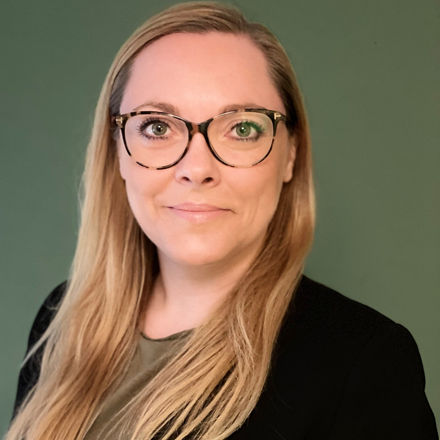Monomaterial Car Seat
The cycle is the goal. Circular production, in which raw materials are recycled and used again and again, would solve numerous challenges. They would be sustainable, conserve resources and avoid waste. One of the central problems with this vision is that many of our everyday products are quite complex in terms of their material diversity. But the more different materials are used, the more difficult it is to recycle them: materials would have to be separated from each other but are often inseparable. "The more complex the disassembly, the more the question arises as to whether the effort is justified," is how Maximilian Rothe, Senior OEM Manager in the High Performance Polymers Business Line, sums it up. How much easier would it be, then, if objects consisted of a single material?
Rothe has been thinking about just that. A monomaterial approach was his guiding principle, i.e. the production of objects from a single material. This is particularly suitable for products that consist of few different materials from the outset. But Rothe and his team deliberately wanted more: They wanted to test what was possible. And in the process, learn something themselves about how circular sustainability must be thought about and planned. A car seat, with its wide variety of requirements, proved to be the ideal demonstrator to illustrate the competencies.
Car seats must meet complex requirements. The framework should be stable and robust, and at the same time it needs a backrest and supports that provide support. They require a frame, must be adjustable, so they need rails and controls, plus fabrics or foam for the headrest and much more. "There are probably a dozen different plastic groups built into a seat," Rothe says. In addition to other materials like metal for the steel frame, "Our question was, how do I do that with a single plastic group? We wanted to think proactively differently."
A plastics group like VESTAMID®. Behind this is a whole range of long-chain polyamides with tailored properties. These polyamides have important properties in common - but also helpful differences. As a material, VESTAMID® is generally lightweight and durable, but it excels in the respective variants with a broad spectrum: "It can be foamed, extruded, injection molded, spun into fibers, and 3D printed.
The seat shows the possibilities of the material
Rothe and his team find a partner for their project: the experts at Vestaro GmbH, who contribute their engineering expertise in developing components for the automotive industry. This is how the prototype is created. "The seat demonstrates the possibilities inherent in the material," enthuses Klaus Heller, project engineer at Vestaro. "It can represent not only hard components, but also non-wovens, fibers, foam - from a single basic material!" The seat is thus also an invitation to all customers to join Evonik in thinking creatively about what else might be possible in the monomaterial idea.
And, as hoped, it was also a lesson in which Rothe learned a few things about what it means to work with monomaterials: "I think it will be very important in the future to think about what it means to design specifically for recycling even before a project starts," he says. If products are created from a single material, this also creates design opportunities; some things, on the other hand, will have to be solved and approached differently than before. "How do I actually think about recycling - that should be our guiding question," says Rothe.
This also includes the environment in which the product in question is used. An item such as a toothbrush, which Evonik also implemented as a monomaterial product, is disposed of every few months. A car is expected to last 15 years or more. That has implications for the associated recycling strategy.
60 years of experience leads to new ways of thinking
For more than 60 years, Evonik has been one of the leading manufacturers of high-performance polymers, constantly developing its products in close cooperation with customers and partners in various industries. In the automotive industry, VESTAMID® was used early on specifically in fuel lines, but also in coolant lines and around electromobility.
But Rothe also wants to look further ahead: This raises the question of how sustainability can be thought of more comprehensively in the entire production process. This also includes the intelligent use of materials to minimize waste. And also the question of how easy it is to dismantle a product at the end of its life cycle in order to actually add it to the recycling loop. Considerations that can be quite complex, but all depend on the first step actually being a product made from monomaterials-and that step, at least, was demonstrated by Evonik's car seat.
"That's also the offer behind it to our customers," Rothe says: "Approach us, talk to us, what's important to you? What do you need?" If a product might have to cut back because of a mono-material - what is possible, what is essential? Will customers accept, for example, a sustainably produced car seat if it is not electrically adjustable or does not have heated seats? And what other products would be possible with a material that can be used so extensively? Rothe is convinced that completely different ideas are possible. Evonik would like to talk about these and many other questions, he affirms. One thing is clear: If the cycle is the goal, then the journey to get there has only just begun.

Isabel Ramor
Head of Market Communications High Performance PolymersSpoken languages: german , english
